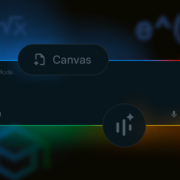Therealthing Marketing Reveals Proven Strategies to Dominate Local SEO in 2025 – FinancialContent
In today’s digital-first world, having a robust online presence is crucial for any business aiming to grow and thrive. For small businesses, service providers, and specialized firms like law offices, local SEO (Search Engine Optimization) has become an essential tool to connect with nearby customers actively searching for their services. Unlike broad SEO strategies that target global or national audiences, local SEO focuses on optimizing your online presence to attract local prospects. The goal is not merely to appear in local search results but to stand out and become the top choice for customers in your vicinity. This article explores the key components of local SEO, why it matters, and how your business can dominate local searches to generate more leads and increase foot traffic.
What Is Local SEO?
Local SEO is the process of optimizing your online content, website, and business listings to rank higher in search engine results for location-based queries. For example, when someone searches for “best coffee shop near me” or “emergency plumber in [city],” search engines like Google deliver results based on proximity, relevance, and prominence. Local SEO ensures your business appears in these search results, especially in the coveted “local pack” or map listings, which are displayed prominently on search pages.
Unlike traditional SEO that often targets keywords with global or national intent, local SEO zeroes in on location-specific keywords and signals, such as city names, neighborhoods, or even “near me” phrases. This approach helps businesses connect with customers who are ready to buy or use services nearby, turning online searches into real-world visits and sales.
Why Local SEO Is Vital for Your Business
For many local businesses, the majority of their customers come from within a specific geographic area. Without local SEO, potential customers searching for your products or services may never find you — or worse, they may find your competitors instead. Local SEO is vital because:
Increased Visibility in Local Searches: Optimizing for local SEO means your business is more likely to appear when people in your area search for what you offer.
Improved Foot Traffic: Higher rankings and visibility can lead directly to more in-person visits, which is especially important for retailers, restaurants, and service-based businesses.
Targeted Leads: Local SEO helps attract prospects who are ready to engage, reducing wasted advertising spend on uninterested audiences.
Builds Trust and Authority: When your business appears at the top of local search results, it signals credibility and authority to potential customers.
Competitive Advantage: Many local businesses have yet to optimize effectively for local SEO, so doing so can put you ahead of competitors in your area.
Key Elements of Local SEO
To dominate local search results, businesses must pay attention to several core components of local SEO:
1. Google Business Profile Optimization
Formerly known as Google My Business, your Google Business Profile (GBP) is arguably the most important factor in local SEO. Claiming and optimizing your GBP listing allows your business to appear on Google Maps and in the local pack. Make sure to complete every section of your profile — business name, address, phone number (NAP), hours, photos, and services. Encourage satisfied customers to leave reviews and respond to them promptly to boost your credibility.
2. Accurate and Consistent NAP Information
Your business name, address, and phone number should be consistent across all online platforms, directories, and your website. Inconsistencies can confuse search engines and reduce your rankings. Use the exact same format everywhere to establish trust and authority.
3. Localized Website Content
Your website should include location-specific keywords, landing pages for each service area, and content that addresses the needs and questions of local customers. For example, a law firm in Chicago should have pages optimized for “Chicago personal injury lawyer” or “legal services in Chicago.” Blog posts about local events or news can also strengthen your local relevance.
4. Local Citations and Directory Listings
Besides Google, your business should be listed on reputable local directories like Yelp, Bing Places, Facebook, and industry-specific sites. The more quality citations you have with consistent NAP details, the stronger your local SEO.
5. Reviews and Reputation Management
Positive customer reviews are crucial for local SEO. They influence search rankings and buyer decisions alike. Encourage customers to leave honest reviews and handle negative feedback professionally and promptly.
6. Mobile Optimization
Many local searches happen on mobile devices as users look for quick answers or directions. Your website must be mobile-friendly, fast-loading, and easy to navigate to keep potential customers engaged.
Beyond Visibility: Driving Real Results Locally
The goal of local SEO goes far beyond simply appearing in search results. It’s about creating a measurable impact on your business’s growth. It’s one thing to show up on the map; it’s another to convert those views into phone calls, store visits, or appointment bookings. Local SEO services, such as The RTM Local SEO, that focus on data-driven strategies can analyze which keywords drive the most traffic, which listings convert visitors, and which areas require more attention.
A strategic local SEO approach helps businesses dominate the local market by enhancing visibility, increasing brand trust, and generating actionable leads. With the right tactics, your business can become the first name nearby customers associate with the products or services you offer.
To illustrate, companies specializing in local SEO know that it’s not enough to appear in local searches—you want to be the dominant presence. By tailoring strategies specifically for small businesses, legal firms, and service providers, these experts deliver measurable growth. Whether it’s climbing higher in Google rankings, attracting more visitors to your physical location, or multiplying local inquiries, the focus is on ensuring your business is the top choice customers find when searching for services like yours.
Best Practices for Local SEO Success
If you’re looking to improve your local SEO, here are some actionable tips:
Keep Your Google Business Profile Updated: Regularly update your profile with new photos, posts, and promotions to engage users.
Optimize for Voice Search: As voice-activated searches grow, optimize your content for natural language and question-based queries.
Use Local Structured Data Markup: Adding schema markup to your website helps search engines better understand your business details and location.
Build Local Backlinks: Partner with local organizations, sponsorships, and events to earn backlinks from credible local sources.
Leverage Social Media: Engage with your community through social media platforms and share location-based content.
Measuring Your Local SEO Performance
Tracking local SEO success is essential to refining your strategy. Use tools like Google Analytics, Google Search Console, and your Google Business Profile insights to monitor:
How many users find your listing and website via local searches
Which keywords drive the most traffic
User engagement metrics (clicks, calls, direction requests)
Growth in customer reviews and overall sentiment
Regularly reviewing these metrics helps you identify strengths and areas needing improvement, keeping your business on the path to local dominance.
Local SEO is an indispensable part of modern business marketing for those wanting to connect with nearby customers in a meaningful, profitable way. By focusing on optimizing your Google Business Profile, ensuring consistent NAP data, creating localized content, and building a solid reputation, your business can rise above competitors in local search results. But it’s not just about showing up—it’s about establishing a commanding presence so that when potential clients in your area search for your services, your business is the clear first choice. With the right local SEO strategies in place, you can turn online visibility into real-world growth and sustained success.
Media Contact
Company Name: Therealthing Marketing
Contact Person: George Clarke
Email: Send Email
City: New York
Country: United States
Website: https://therealthingmarketing.com/









